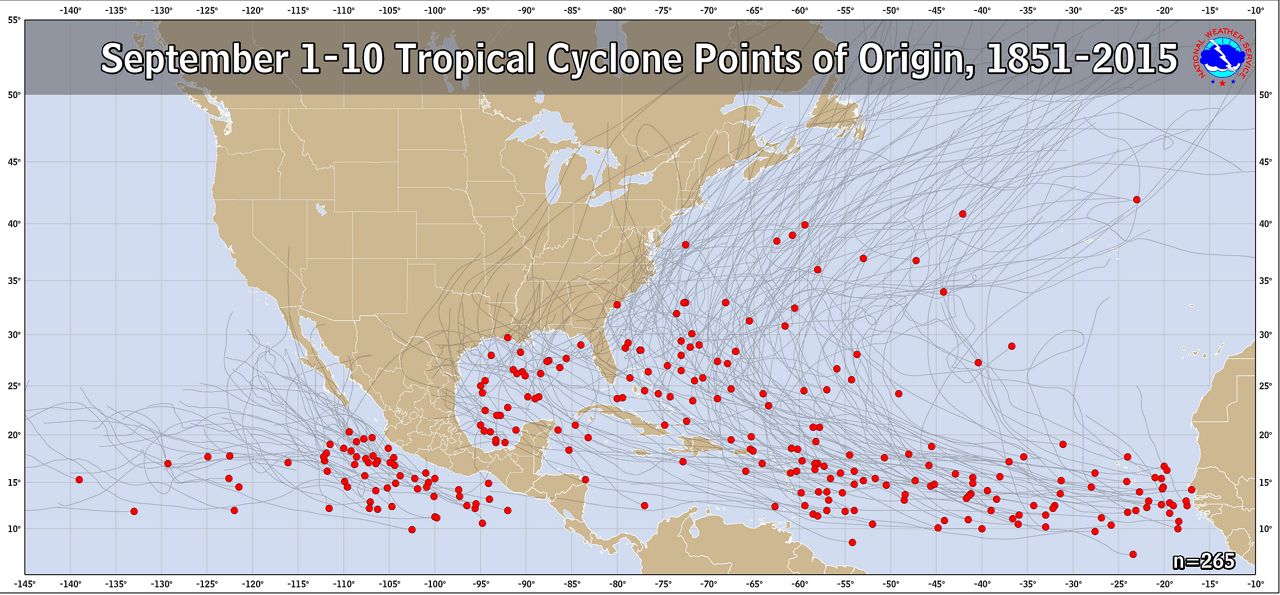Nana made landfall as a hurricane in Belize shortly after midnight early Thursday morning. Nana became a hurricane just east of Central America late on Wednesday night, but quickly dissipated over the mountainous terrain of Central America.
Nana first formed as a tropical storm in the Caribbean Sea on Tuesday, becoming a hurricane hours before landfall Thursday morning.
The storm quickly weakened, and we're no longer seeing a tropical depression. Although, the remnants of Nana still continue to bring heavy rainfall to southern Mexico and Guatemala.
Meanwhile, in the central Atlantic, Omar continues to not want to give up and is still a tropical depression. It's far from land, well north of Bermuda, and it is not looking to impact any land.
Strong wind shear and colder waters have taken their toll on the storm. Omar is expected to dissipate over the next couple of days.
We're watching four different tropical waves. Three are in the southern Atlantic, near the coast of Africa, and have between a medium and high chance of development over the next five days.
One lies in the northern-central Atlantic and has a low chance of development.
We'll continue to update you on the activity.
Nana and Omar's dual developments on Monday mean that the Atlantic is already up to 15 named storms so far this season - far more than the 12 named storms that develop over the course of an average full season.
Nana and Omar also became the earliest N and O-named storms on record in the basin, and the 2020 Atlantic season continues to outpace the 2005 season in terms of record-setting early development.

The average peak of the hurricane season is approaching and tropical systems can develop just about anywhere in the Atlantic basin this time of year.
In the first ten days of September, they have formed anywhere from the Gulf of Mexico to off the coast of Africa and everywhere in between. This is also the time of year when some of the strongest hurricanes happen.




